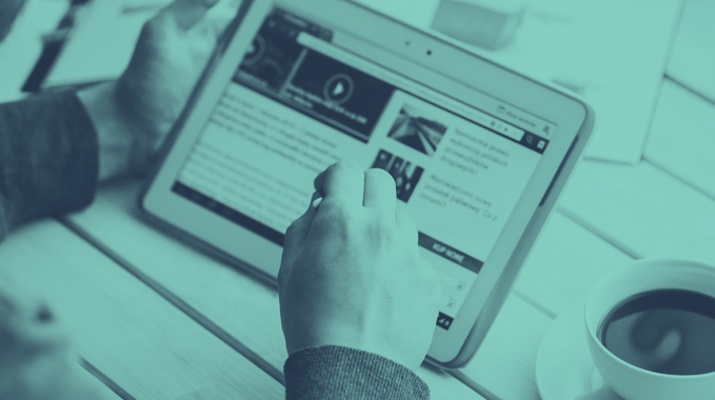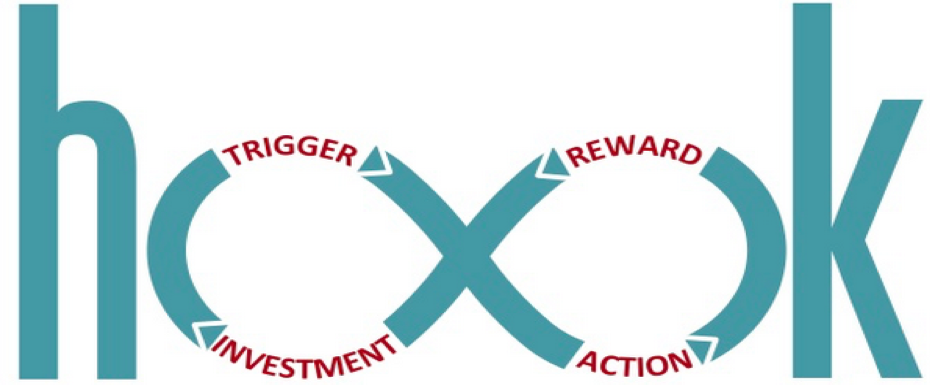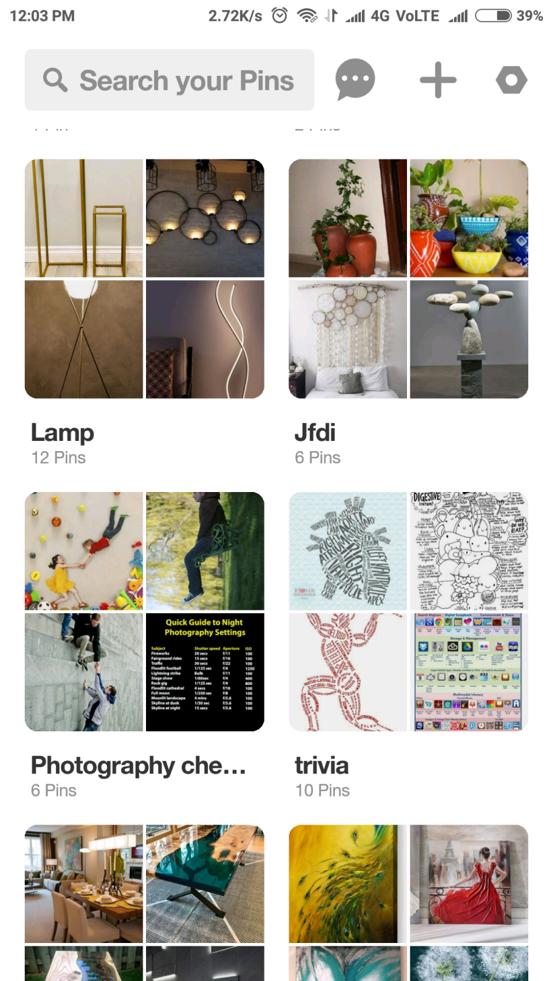How to Get Users Hooked on Your App Using Habit-Driven Design

How to Get Users Hooked on Your App Using Habit-Driven Design
Contributed ContentStudy the ideal user experience (UX) and web design for your user base and make your mobile app a habit with these tips.
Forty percent (40%) of the things we do in a day are done out of habit, and UX design that can tap into this psychology of habit has the potential to be a massive success with users.
Today, you could have done anything. You could have hit the gym or written that article you’ve been thinking about for a few weeks.
Instead, you chose to spend your free time on Facebook, browsing through pictures of other people’s lives.
Why? Because it’s a habit.
Whenever you have a moment, you pull out your phone and go on social media.
This instinct is the power of habit.
Certain apps like Facebook, Instagram, and YouTube have truly gotten users hooked on social media.
Today, media is constantly competing for our attention on television, phones, and computers. We, as users, function on a neurological autopilot. We “google” when we’re curious, watch YouTube videos when we’re bored, and head straight to Pinterest when we need an idea.
After all, social media is designed to be habit forming. It taps into the deepest human emotions of FOMO (fear of missing out), communicating and sharing your lives with people.
We studied Nir Eyal’s Hook model and analyzed how 4 of the biggest social media platforms use this model to develop habit-forming design.
If you wish to make your app as addictive as these top social media platforms, you need to understand the psychology of habit. Once you understand habit, you will need to find a way to access users’ neurological autopilot.
How to Develop Habits and the “Hook” Principle
Nir Eyal, the author who shook up Silicon Valley with his book “Hooked: How to Build Habit-Forming Products,” has laid out a map for people who hope to create a product that users can’t help but use all the time.
His hook model entails that every habit-forming product follows a habit cycle that resembles the infinity sign, with its core elements being Trigger, Action, Reward, and Investment.

Let’s deconstruct this loop and see how the human brain responds to each of these elements that create a habit.
1. Trigger
What cues a user to start using your app? That spark or sudden urge to pick up your phone and click on an icon is called a trigger.
Triggers can be external or internal. When users use your app, it is either because they received a notification (external trigger) or felt bored and needed an escape (internal trigger).
Triggers are important to analyze so you can understand what is drawing users to your app and why.
2. Action
After users receive a “trigger,” they should feel compelled to commit an “action.” This action would ideally be to log in and use your app.
3. Reward
Now, comes the compelling part – the reward. Every time the users use an app, they should feel accomplished, entertained, or happy.
Mostly, in cases of habit-driven apps, the reward is just a feeling of happiness, satisfaction or fulfillment. The number of likes on a post or picture brings a rush of dopamine, making people feel good. That’s a reward that we’re all seeking in these apps.
4. Investment
Investment truly makes the app a habit cycle. When using an app, users should ideally invest a part of their life on the platform.
People can upload pictures, write great content, provide data or do something that not only requires an effort but also makes them emotionally invested in your app. When people take time to add content to an app or put in an effort to personalize the information, they are more likely going to return to the app.
How Top Social Media Platforms Use These Principles
Now, let’s break down how the top social media platforms have positively become a part of our lives and how they have used the above principles to get the users hooked on their app.
Every time your phone buzzes with a notification from Facebook, you are filled with anticipation of a reward, which could be that someone special liked your post, or it got shared X number of times. It is this anticipation of an unknown reward that draws us to the app.
Following the model above, the notification is the trigger and once you log in to Facebook, you have committed an action. The happiness that comes from seeing people appreciate your post or picture is the reward. Once you have then posted a picture, you are invested in the app.
Usually, pictures people post have some sentimental value in their lives. Having likes and comments on these photos add to these memories as people can reminisce together.
Facebook allows people to preserve these moments and share them with other friends. As you grow your community online and continue to make more connections, you soon become hooked on checking updates and learning about other people’s lives.
Facebook then becomes a habit and a go-to app that people enjoy using.
YouTube
The days of TV guides and TV listings in newspapers are long gone as now people can watch almost every show online.
YouTube provides a channel of seemingly endless content. Why read a recipe for baking apple pie when you can watch it being made? Over 1.3 billion people use YouTube with 300 hours of video being uploaded to YouTube every minute.
Some of life’s simple daily challenges are easily addressed in a video on YouTube. Further, YouTube collects information about previous videos you have browsed and can recommend relevant videos based on your history.
The AI-powered curated content that greets you as soon as you open the YouTube app is an assurance that you will find something entertaining as soon as you open it. As such, you have an internal trigger to open the app for entertainment.
Further, you then actively open the app and are rewarded for this action with content. You can invest in the app by commenting on videos and saving them to your channel. YouTubers can also create their own videos and post them on the platform to share with others.
With such a diverse and seemingly infinite list of content, using YouTube can easily become a habit.
Pinterest is a magnet for anyone looking for fresh ideas and inspiration. When you receive a notification that says, “we’ve found 20 new ideas for your board Mini Bar Designs,” you can’t help but click on the app.
You are then treated to a bouquet of perfectly photographed designs that are made to look entirely doable. You click on one picture and you are treated to a dozen others that offer variety in the same vein.
Out of all these hundreds of pictures you see, Pinterest lets you easily save the ones you like in well-categorized boards. When you create a board, you fill it with some of your favorite ideas and images that you found after hours of scrolling.

My Pinterest Board saves my favorite ideas out of the millions I may have seen so far. I hope to either make or buy all these things someday and cannot afford to lose these ideas.
This board is now an investment. I cannot possibly recall these pictures by memory or keep screenshots of all of them. The board keeps users coming back every time they need inspiration.
In addition to the “trigger” and “reward” found on Facebook, what makes Instagram so compelling is the aspiration to be like the people we see. We follow the accounts of people we want to emulate, and then we invest an effort into becoming them.
The desire to live a beautiful ‘Instagram worthy’ life and to share it online is the desire that keeps you clicking and using Instagram.
All of those painstakingly clicked and perfectly edited photographs along with the comments and appreciation then become your investment for the future.
How Do You Make People Keep Coming Back to Your Platform?
To make your app “habit-worthy,” you should follow the Hook method and integrate trigger, action, reward, and investment in your design. The strongest points of this strategy must be your reward and investment.
Creating the Reward System
To emulate the popularity of Facebook, Instagram, and Pinterest is almost impossible.
Still, you can learn from what these social apps accomplished and incorporate the ideas into your own marketing campaigns.
Come up with a reward format that appeals to some of the most basic emotional needs. We all need a good friend, a laugh, and conversation. We all want more knowledge, ideas and inspiration and less stress, confusion, and frustration.
Find a way to address these issues and watch your audience grow.
Making Sure Your Users Are Invested
Make sure your audience contributes something highly personal to your app.
Design a better interface that makes storing, classifying, and finding content easier. Encourage users to share more of their own media and build collections. Add value to these collections using the best AI and curated content.
When users have created something on your app that they don’t have anywhere else, they tend to stick around.
Ensuring the Best Trigger to Get Action
Once you have your reward and investment figured out, use personalized ideas from these to craft the best notifications, messages, and alerts that serve as your triggers and compel action.
Habit Forming Design is the Future of Web
Internet was a game changer. Today, it is omnipresent. We’ve gone from searching for information to having too much of it.
This is definitely the age of choice overload and the future of decision-making lies more in habit than logic. We tend to choose what’s familiar instead of analyzing what’s better.
Habit-driving design is what businesses need to master if they wish to see their app achieve the status of a compelling app like Facebook or Instagram. Consult with an app developer to learn more about what your mobile app can include.
